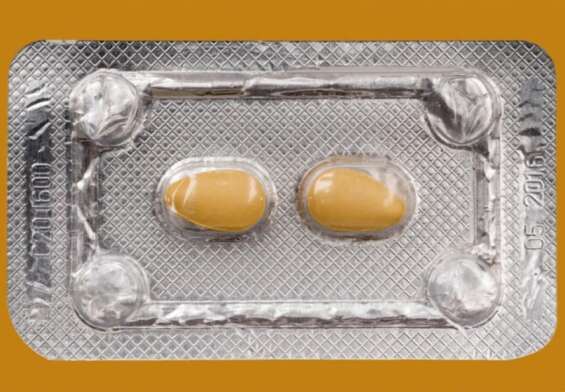
Penile Yeast Infection: Causes, Symptoms, and Treatments
Penile yeast infection is a common condition caused by an overgrowth of Candida fungus on the penis. It can cause discomfort, itching, and redness, and may be accompanied by a foul odor. Penile yeast infection is often associated with poor hygiene, but there are many other factors that can contribute to its development.
Penile yeast infection is a fungal infection that affects the penis. It is caused by an overgrowth of Candida fungus, which is a type of yeast. This type of infection can occur in both circumcised and uncircumcised men, and is more common in men who have diabetes or weakened immune systems.
What is Penile Yeast Infection?
Penile yeast infection, also known as male candidiasis, is a common condition caused by overgrowth of the Candida fungus in the penis. While candida is a normal resident of the body, an overgrowth can cause infection and inflammation in the affected area.
Causes Of Penile Yeast Infection
Penile yeast infection can occur due to various reasons, such as poor hygiene, antibiotic use, compromised immune system, and sexual transmission. Candida overgrowth can also be triggered by high blood sugar levels, which is common in people with diabetes.
Symptoms Of Penile Yeast Infection
Symptoms of penile yeast infection can include redness, itching, swelling, and irritation of the penis. In severe cases, blisters and discharge may also occur. In some cases, the symptoms may be similar to those of sexually transmitted infections, making it important to seek medical attention for an accurate diagnosis.
Prevention Of Penile Yeast Infection
Prevention of penile yeast infection includes maintaining good hygiene, avoiding the use of harsh soaps and chemicals in the genital area, and wearing loose-fitting, breathable clothing. It is also important to avoid sexual contact until the infection has cleared and to practice safe sex to prevent transmission of the infection.
Why Penile Yeast Infection Is A Common Condition Among Men
Penile yeast infection is a common condition among men because the penis provides an ideal environment for the growth of Candida fungus. Warmth, moisture, and darkness all contribute to the development of a yeast infection. Other factors that can contribute to the development of a penile yeast infection include poor hygiene, use of antibiotics, and certain medical conditions such as diabetes and HIV/AIDS.
Symptoms of Penile Yeast Infection
Penile yeast infection, also known as candidal balanitis, is a common condition among men caused by an overgrowth of the fungus Candida. The symptoms of penile yeast infection can vary depending on the severity and type of infection. In general, the symptoms may include:
- Itching and burning: A common symptom of penile yeast infection is itching and burning around the penis and foreskin. This can be particularly uncomfortable during sexual activity or when urinating.
- Redness and inflammation: The affected area may appear red and inflamed, with some swelling and tenderness. This can be a sign of a more severe infection.
- White discharge: A white discharge may be present on the penis, particularly under the foreskin. This can be thick and lumpy, resembling cottage cheese.
Different Types of Penile Yeast Infection
There are different types of penile yeast infection, which can affect different areas of the penis. These include:
- Balanitis: Balanitis is an infection that affects the head of the penis and the foreskin. It is the most common type of penile yeast infection.
- Posthitis: Posthitis is an infection that affects the foreskin only.
- Balanoposthitis: Balanoposthitis is an infection that affects both the head of the penis and the foreskin.
How to Distinguish Penile Yeast Infection from Other Genital Infections
It is important to distinguish penile yeast infection from other genital infections, such as sexually transmitted infections (STIs). The following are some tips to help you distinguish between different types of genital infections:
- Look for specific symptoms: Penile yeast infection often presents with itching, burning, and white discharge, while other STIs may have different symptoms such as pain, sores, or discharge that is not white.
- Consider recent sexual activity: If you have had recent sexual activity, it is possible that you have contracted an STI. Penile yeast infection is not typically a sexually transmitted infection.
- Get tested: The best way to determine the cause of your symptoms is to get tested by a healthcare provider. They can perform a physical examination and laboratory tests to determine the cause of your symptoms and provide appropriate treatment.
Recognizing the symptoms of penile yeast infection and seeking medical attention can help prevent complications and improve your overall health. If you suspect that you may have a penile yeast infection, it is important to see a healthcare provider for an accurate diagnosis and treatment. Proper hygiene and preventive measures, such as avoiding tight-fitting clothing and using condoms during sexual activity, can also help prevent future infections.
Causes of Penile Yeast Infection
Penile yeast infections are caused by an overgrowth of the fungus Candida. Candida is a type of fungus that is commonly found on the skin and in the mouth and digestive tract. In most cases, the immune system keeps Candida under control, but certain factors can lead to an overgrowth of the fungus, resulting in an infection.
Common Causes Of Penile Yeast Infection
- Poor hygiene: Poor hygiene, including infrequent washing of the penis and failure to dry the area thoroughly, can create a moist environment that promotes the growth of yeast.
- Antibiotics: Antibiotics can kill the beneficial bacteria that normally keep Candida in check, allowing the fungus to grow unchecked.
- Diabetes: Men with diabetes are at an increased risk of developing penile yeast infections because the high blood sugar levels associated with diabetes can create an environment that promotes yeast growth.
- Immune system disorders: Men with weakened immune systems, such as those with HIV/AIDS or those undergoing chemotherapy, are more susceptible to fungal infections.
- Sexual transmission: Although rare, penile yeast infections can be transmitted through sexual contact with an infected partner.
Risk Factors For Penile Yeast Infection
While any man can develop a penile yeast infection, there are certain risk factors that can increase the likelihood of developing an infection:
- Poor hygiene: Infrequent washing of the penis or failure to dry the area thoroughly after washing can create an environment that promotes yeast growth.
- Antibiotics: The use of antibiotics can kill the beneficial bacteria that normally keep Candida in check, allowing the fungus to grow unchecked.
- Diabetes: Men with diabetes are at an increased risk of developing penile yeast infections because high blood sugar levels can promote yeast growth.
- Weakened immune system: Men with weakened immune systems are more susceptible to fungal infections.
- Sexual activity: Men who are sexually active are at an increased risk of developing a penile yeast infection, particularly if they have multiple sexual partners.
How To Prevent Penile Yeast Infection
Good hygiene practices can help prevent penile yeast infections. Some tips for preventing yeast infections include:
- Washing the penis regularly with soap and water and drying the area thoroughly.
- Avoiding the use of harsh soaps and detergents that can irritate the skin.
- Wearing loose-fitting, breathable clothing, particularly in warm, humid environments.
- Avoiding sexual contact with an infected partner.
- Avoiding the use of antibiotics unless they are absolutely necessary.
- Managing diabetes through proper diet, exercise, and medication, as prescribed by a healthcare provider.
Penile yeast infection is a common fungal infection that can cause discomfort and irritation in men. The infection is caused by an overgrowth of the fungus Candida and can be prevented by maintaining good hygiene practices, avoiding the use of antibiotics unless absolutely necessary, and managing underlying conditions such as diabetes. Men who experience symptoms of a penile yeast infection should seek medical attention to receive proper diagnosis and treatment.
Treatment of Penile Yeast Infection
Penile yeast infection can be treated effectively with medications. Treatment options may vary depending on the severity of the infection and whether the infection is a first-time occurrence or a recurring problem.
Over-the-counter medications for penile yeast infection are available at most drug stores and pharmacies. These medications usually come in the form of antifungal creams, ointments, or sprays that can be applied directly to the affected area. Common over-the-counter medications for penile yeast infection include miconazole, clotrimazole, and terbinafine.
If over-the-counter medications are not effective, prescription medications may be necessary. Prescription medications for penile yeast infection include fluconazole, itraconazole, and ketoconazole. These medications are usually taken orally and may require a prescription from a healthcare provider.
In addition to medication, maintaining good hygiene practices is essential for treating and preventing penile yeast infection. Keeping the genital area clean and dry can help prevent the growth and spread of yeast. Wearing loose-fitting clothing made of breathable materials, such as cotton, can also help prevent the growth of yeast.
It is also important to avoid activities that can cause moisture buildup in the genital area, such as prolonged sweating, wearing wet clothing, or swimming in chlorinated water. Engaging in sexual activity with a partner who has a yeast infection can also increase the risk of developing a penile yeast infection.
If left untreated, penile yeast infections can lead to more severe health problems, including the spread of infection to other parts of the body. Therefore, it is essential to seek medical attention if symptoms persist or worsen despite treatment.
Penile yeast infection can be effectively treated with medications, including over-the-counter and prescription options. Good hygiene practices, such as keeping the genital area clean and dry, wearing loose-fitting clothing, and avoiding activities that can cause moisture buildup, can also help prevent and treat penile yeast infection. Seeking medical attention if symptoms persist or worsen is important to prevent the spread of infection to other parts of the body.
Home Remedies for Penile Yeast Infection
Penile yeast infection can be a frustrating and uncomfortable experience for men. While medical treatments are available, some people prefer to try natural remedies or home remedies first. Here are some options to consider:
Home Remedies for Penile Yeast Infection
Probiotics: Probiotics can help balance the bacteria in your body, which can prevent yeast overgrowth. Eating foods rich in probiotics, such as yogurt, kefir, and sauerkraut, or taking a probiotic supplement may be helpful.
- Coconut oil: Coconut oil contains lauric acid, which has antifungal properties. Applying coconut oil topically to the affected area can help reduce symptoms.
- Garlic: Garlic has natural antifungal properties. Eating garlic or applying garlic paste to the affected area may help alleviate symptoms.
- Tea tree oil: Tea tree oil has antifungal properties and can be applied topically to the affected area. However, it is important to dilute tea tree oil with a carrier oil, such as coconut oil, before using it on the skin.
- Apple cider vinegar: Apple cider vinegar has antifungal properties and can help balance the pH of the skin. Diluting apple cider vinegar with water and applying it to the affected area may be helpful.
Natural Remedies for Penile Yeast Infection
In addition to home remedies, there are also natural remedies that may be effective in treating penile yeast infection.
Caprylic acid: Caprylic acid is a natural antifungal compound that can be found in coconut oil, among other sources. Taking a caprylic acid supplement may be helpful in preventing and treating yeast overgrowth.
Grapefruit seed extract: Grapefruit seed extract has natural antimicrobial properties and can be taken orally or applied topically to the affected area.
Oregano oil: Oregano oil has antifungal properties and can be taken orally or applied topically to the affected area. However, it is important to dilute oregano oil with a carrier oil before using it on the skin.
Do’s and Don’ts When Treating Penile Yeast Infection at Home
When trying home remedies or natural remedies for penile yeast infection, there are some important things to keep in mind.
Do:
- Keep the affected area clean and dry.
- Wear loose-fitting clothing made from breathable fabrics.
- Use condoms during sexual activity to prevent the spread of infection.
- Seek medical attention if symptoms do not improve or worsen.
Don’t:
- Use scented products, such as soaps or lotions, on the affected area.
- Have unprotected sex during treatment.
- Douche or use other vaginal cleansing products, as they can disrupt the natural balance of bacteria in the body.
While home remedies and natural remedies may be helpful in treating penile yeast infection, it is important to seek medical attention if symptoms do not improve or worsen. Your healthcare provider can recommend the most effective treatment for your individual needs.
FAQs About Penile Yeast Infection
Penile yeast infection is a common condition that affects many men. Here are some frequently asked questions about this condition:
What Causes Penile Yeast Infection?
Penile yeast infection is caused by an overgrowth of the Candida fungus. This can occur when the balance of bacteria in the body is disrupted, leading to the growth of the fungus.
What Are The Symptoms Of Penile Yeast Infection?
The symptoms of penile yeast infection can include redness, itching, and a burning sensation on the penis. Other symptoms may include pain during sex, difficulty urinating, and a discharge from the penis.
How Is Penile Yeast Infection Diagnosed?
A healthcare provider may diagnose penile yeast infection by examining the affected area and taking a sample of the discharge to test for the presence of the Candida fungus.
Can A Woman Give A Man A Yeast Infection?
Yes, it is possible for a woman to give a man a yeast infection through sexual contact. However, it is not a sexually transmitted infection.
Can Stress Cause Penile Yeast Infection?
Stress is not a direct cause of penile yeast infection, but it can weaken the immune system, making it easier for the Candida fungus to grow and cause an infection.
Can Penile Yeast Infection Go Away On Its Own?
In some cases, a mild penile yeast infection may go away on its own. However, more severe cases may require treatment to fully eliminate the infection and prevent it from recurring.
Risk Factors for Penile Yeast Infection
Penile yeast infection is a common condition that affects many men. While anyone can develop a yeast infection, there are several risk factors that increase the likelihood of getting one. Some of the most common factors that increase the risk of penile yeast infection include:
- Antibiotics: Antibiotics can disrupt the natural balance of bacteria and yeast in the body, making it easier for yeast to overgrow.
- Diabetes: Men with diabetes have a higher risk of developing yeast infections, as high blood sugar levels can create an environment that is conducive to yeast growth.
- Weakened immune system: Men with weakened immune systems are more susceptible to infections of all kinds, including yeast infections.
- Sexual activity: Sexual activity can increase the risk of yeast infections, especially if a man has unprotected sex with a partner who has a vaginal yeast infection.
- Tight-fitting clothing: Tight-fitting clothing, especially synthetic fabrics, can create a warm, moist environment that is perfect for yeast growth.
- Poor hygiene: Poor hygiene can create an environment that is conducive to yeast growth, especially if a man does not clean the penis regularly or properly.
To reduce the risk of developing a penile yeast infection, there are several steps men can take. These include:
- Practicing good hygiene: Men should clean the penis regularly and properly to reduce the risk of infection.
- Wearing loose-fitting clothing: Men should wear loose-fitting, breathable clothing made of natural fibers to help reduce the risk of infection.
- Managing diabetes: Men with diabetes should work with their healthcare provider to manage their blood sugar levels and reduce the risk of infections.
- Using condoms during sexual activity: Using condoms during sexual activity can help reduce the risk of yeast infections.
- Avoiding douching and other irritants: Men should avoid using douches or other irritants on or around the penis, as these can disrupt the natural balance of bacteria and yeast in the body.
By understanding the risk factors for penile yeast infection and taking steps to reduce the risk of infection, men can help protect themselves from this uncomfortable and sometimes painful condition.
Over-the-Counter Treatments for Penile Yeast Infection
Penile yeast infection can be treated with over-the-counter antifungal medications. These medications are available in various forms such as creams, sprays, and powders. Here are some of the commonly used over-the-counter treatments for penile yeast infection:
- Clotrimazole: This is an antifungal cream that can be used to treat penile yeast infection. It works by killing the fungus causing the infection. Apply the cream to the affected area twice a day for 7 to 14 days.
- Miconazole: This is another antifungal cream that can be used to treat penile yeast infection. Apply the cream to the affected area twice a day for 7 to 14 days.
- Terbinafine: This is an antifungal cream that can be used to treat penile yeast infection. Apply the cream to the affected area once or twice a day for 1 to 4 weeks.
- Clotrimazole spray: This is a spray that can be used to treat penile yeast infection. Spray the affected area twice a day for 7 to 14 days.
- Tolnaftate powder: This is a powder that can be used to treat penile yeast infection. Apply the powder to the affected area once or twice a day for 1 to 4 weeks.
When using over-the-counter treatments for penile yeast infection, it is important to follow the instructions on the packaging. Apply the medication as directed and continue to use it for the recommended period of time, even if symptoms improve.
It is also important to keep the affected area clean and dry. Avoid wearing tight clothing that can trap moisture, and use a mild soap when washing the area.
If symptoms persist or worsen after using over-the-counter treatments, it is important to see a healthcare provider. They may recommend a prescription-strength antifungal medication or further testing to confirm the diagnosis.
Prescription Treatments for Penile Yeast Infection
Prescription medications may be necessary for severe or persistent cases of penile yeast infection. Common prescription treatments include:
- Fluconazole: an oral antifungal medication that is taken once a week for several weeks.
- Clotrimazole: a topical cream or ointment that is applied directly to the affected area.
- Terbinafine: an antifungal medication that can be taken orally or applied topically.
- Ketoconazole: an antifungal medication that is taken orally or applied topically.
It is important to follow your doctor’s instructions for using prescription medications. They may advise you to apply the medication to the affected area once or twice a day, or to take the medication orally for a specified period of time.
It is also important to finish the entire course of medication, even if your symptoms disappear before you finish the medication. Stopping medication too soon may cause the infection to return.
Prescription medications can have side effects, so it is important to inform your doctor if you experience any adverse reactions. Some possible side effects of prescription antifungal medications include upset stomach, headache, and rash.
In addition to prescription medication, your doctor may also recommend changes to your lifestyle or hygiene habits to help prevent future infections. This may include wearing loose-fitting clothing, avoiding scented soaps or perfumes, and washing the affected area with warm water and mild soap.
How to Prevent Penile Yeast Infection
Penile yeast infections can be uncomfortable and embarrassing, but there are ways to prevent them from occurring in the first place. Here are some tips for preventing penile yeast infection:
- Maintain good genital hygiene: Keeping the genital area clean and dry is crucial for preventing yeast infections. Wash the penis with mild soap and warm water, and dry it thoroughly afterward.
- Wear loose-fitting clothes: Tight-fitting clothes can trap moisture and promote yeast growth. Choose breathable, loose-fitting clothing to help keep the genital area dry.
- Avoid using scented products: Scented soaps, shower gels, and sprays can irritate the genital area and promote yeast growth. Stick to unscented products instead.
- Practice safe sex: Using condoms can help prevent the spread of yeast infections during sexual activity. Make sure to clean sex toys thoroughly after use.
- Manage underlying health conditions: Certain health conditions, such as diabetes, can increase the risk of yeast infections. Managing these conditions can help prevent yeast infections from occurring.
- Consider natural remedies: Some natural remedies, such as probiotics and tea tree oil, may help prevent yeast infections. However, it’s important to talk to a healthcare provider before using any natural remedies.
By following these tips, men can reduce their risk of developing a penile yeast infection. If a yeast infection does occur, it’s important to seek treatment from a healthcare provider to prevent it from worsening or spreading to other parts of the body.
Do’s and Don’ts When Treating Penile Yeast Infection at Home
If you are experiencing penile yeast infection, there are certain things you should and should not do when treating it at home. Here are some do’s and don’ts to follow:
Do’s:
- Keep the affected area clean and dry.
- Wear loose-fitting clothing to allow air to circulate and reduce moisture.
- Use over-the-counter antifungal creams or ointments as directed by a healthcare professional.
- Use a warm compress to relieve itching and discomfort.
- Practice good hygiene, including washing your hands regularly.
Don’ts:
- Do not scratch or pick at the affected area, as this can worsen the infection.
- Do not use scented products, such as soap or bubble bath, on the affected area.
- Do not have sexual activity until the infection has cleared up to prevent spreading it to your partner.
- Do not use home remedies that have not been proven effective, as they may make the infection worse.
- Properly caring for the affected area is essential when treating penile yeast infection. Here are some additional tips to follow:
- Avoid using perfumed products, as they can irritate the skin and exacerbate the infection.
- Consider using a mild, unscented soap to clean the affected area.
- Be sure to dry the area thoroughly after showering or bathing.
- Use a separate towel to dry the affected area to prevent spreading the infection.
By following these do’s and don’ts and taking proper care of the affected area, you can effectively treat penile yeast infection at home. However, if symptoms persist or worsen, it is important to seek medical attention from a healthcare professional.
Diagnosing Penile Yeast Infection
If you suspect that you may have a penile yeast infection, it’s important to seek medical attention to get an accurate diagnosis. The diagnosis process usually involves a physical examination of the affected area and tests to confirm the presence of yeast.
During a medical examination, the doctor will likely ask about your symptoms, medical history, and sexual activity. They will then perform a physical examination of the penis to look for signs of infection, such as redness, swelling, and discharge.
To confirm the presence of yeast, the doctor may take a sample of the discharge or affected tissue for testing. The sample is then examined under a microscope to check for the presence of yeast or other microorganisms.
In some cases, the doctor may also perform a blood test to check for the presence of antibodies to Candida, the fungus that causes yeast infections.
It’s important to note that self-diagnosis and treatment of penile yeast infection is not recommended. Without an accurate diagnosis, you may be treating the wrong condition, which can lead to ineffective treatment and potentially worsen your symptoms.
If you suspect that you may have a penile yeast infection, seek medical attention as soon as possible for an accurate diagnosis and appropriate treatment. Early treatment can help alleviate symptoms and prevent complications.
Differences Between Penile Yeast Infection and Other Genital Infections
Distinguishing penile yeast infection from other genital infections is essential for proper treatment. While some symptoms may overlap, there are some distinct differences that can help identify the specific infection.
Similarities between penile yeast infection and other genital infections include itching, burning, and redness. However, other genital infections may also present with discharge, blisters, sores, or painful urination, which are not commonly seen in penile yeast infections.
One of the most significant differences between penile yeast infections and other genital infections is the cause. Penile yeast infections are caused by an overgrowth of the Candida fungus, while other genital infections may be caused by bacteria or viruses. Additionally, certain sexually transmitted infections, such as chlamydia or gonorrhea, may not cause symptoms in some individuals, making it important to get tested regularly.
To distinguish between these infections, a medical professional may perform a physical exam, collect a swab or urine sample, or run a blood test. Treatment options vary depending on the type of infection and may include antifungal medications, antibiotics, or antiviral drugs.
It is crucial to seek medical attention if you suspect a genital infection, as untreated infections can lead to complications such as infertility or chronic pain. Additionally, practicing safe sex and maintaining good genital hygiene can help prevent the spread of infections and reduce the risk of developing a genital infection.
Conclusion
In conclusion, penile yeast infections are a common condition that can cause discomfort and embarrassment for those affected. It is important to seek medical attention if you suspect you have a penile yeast infection, as it can easily be mistaken for other genital infections. Symptoms include itching, burning, redness, and discharge, and can be effectively treated with over-the-counter antifungal creams or prescription medication.
To prevent penile yeast infections, it is important to practice good hygiene, wear clean and breathable underwear, and avoid using irritating products in the genital area. Additionally, managing underlying health conditions such as diabetes or a weakened immune system can help prevent recurrent infections.
Remember, if you are experiencing symptoms of a penile yeast infection, seek medical attention to confirm the diagnosis and receive appropriate treatment. With proper care and attention, penile yeast infections can be effectively treated and managed.











